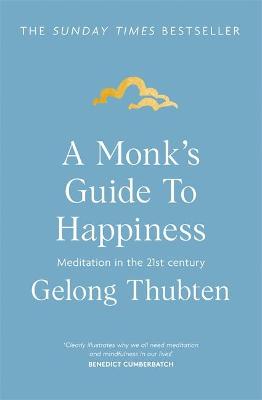
You should carefully consider the dimensions when purchasing a zafu. Standard size is approximately 14" across and 20" tall when fluffed. The zafu's main material is made of heavy cotton. It is also filled with kapok, which is a fluffy plant fiber from the ciba tree. It can be adjusted to fit a range of sitting positions. The zafu also looks great and is comfortable enough to use on a couch.
The standard zafu diameter is 16 inches. You can purchase a smaller zafu that measures 8 inches in diameter. This is the best option if you're a beginner. Choose a taller zafu than your height. If you're shorter than five feet, choose a zafu that sits 5 inches higher than you do. If you are seated on a thin yoga mat, a high lift allows you to sit forward.

Be sure to select a size that suits your body when buying zafu. A medium-sized cushion would be best for someone over 100 pounds. Large zafus are popular and can accommodate most people. They are made of premium cotton shells. The zafus are stuffed with 3 1/2 lbs. of kapok. Unstuffed kafu works best for people who don't like the feel or texture of kapok.
The zafu is made of several kilograms buckwheat and has a zipper that allows for the addition of more buckwheat shells. The majority of zafu models can be made from linen and are not dyed. The dimensions are sixteen inches in diameter by fourteen inches. They are firm and comfortable on their own, but the memory foam top makes them more stable. The zafu sits about 5 to 8 inches above the floor.
The zafu usually contains kapok, which can be soft and durable. The buckwheat hulls are much heavier than kapok and will break down over time. If you use your zafu everyday, it's important to replace the Buckwheat Hulls. If you use your zafu daily, the buckwheat shell should be replaced each year.

Also, when practicing meditation, the zafu should be measured. A full zafu, or rectangular cushion, is a rectangle. A crescent zofu is round. It can be used as a meditation tool in a zoo or as a prop for yoga. It has been designed to support the spine and reduce stress. This type zafu is used by meditators to support their legs.
Important decision is making the right size zafu. A large zefu may make you feel uncomfortable. A small zefu can be more comfortable over long periods of times. Also, a zafu must be appropriate to your body for meditation. A zefu's size is important to your comfort. A zefu can provide a place for meditation. A zafu can be used in any position to improve your posture.
FAQ
What is the healthiest lifestyle to life?
A healthy lifestyle means eating healthy foods, exercising regularly, sleeping well, and avoiding stress. These guidelines will help you live a long, healthy life.
Small changes to your diet or exercise routine can help you start losing weight. Try walking for 30 minutes each day to lose weight. If you're looking for a way to increase your activity, consider taking up swimming or dancing. You could also sign up to an online fitness platform like Strava, which tracks your activity.
How can I live my best life everyday?
The first step towards living your best life everyday is to find out what makes you happy. Once you know what makes you happy, you can work backwards from there. Asking others about their lives can help you to see how they live the best life possible.
You can also find books such as "How to Live Your Best Life" written by Dr. Wayne Dyer. He speaks about happiness and fulfillment in all areas of life.
What is the difference of a virus from a bacteria?
A virus is a microscopic organism which cannot reproduce outside of its host cell. A bacterium can be described as a single-celled organism which reproduces by splitting in two. Viruses can be as small as 20 nanometers, while bacteria can grow up to 1 micron.
Viruses are usually spread through contact with infected bodily fluids, including saliva, urine, semen, vaginal secretions, pus, and feces. Bacteria are usually spread through direct contact with contaminated objects or surfaces.
Viruses can get into our bodies through cuts and scrapes on the skin, bites, and other injuries. They may also get into the body through the nose and mouth, eyes, ears or rectum.
Bacteria may enter our bodies through cuts and scrapes on our skin, burns, insect bites, and other wounds. They may also come into our bodies through food, water, air, soil, dust, or animals.
Both bacteria as well as viruses can cause illness. But viruses can't multiply within their hosts. So they only cause illnesses when they infect living cells.
Bacteria can multiply within their hosts and cause illness. They can infiltrate other parts of the body. That's why we need antibiotics to kill them.
Is being cold bad for your immune system?
Cold makes you weaker because you have less white blood cells to fight infection. However, being cold also makes you feel better because your body releases endorphins into your brain which reduce pain.
Statistics
- Extra virgin olive oil may benefit heart health, as people who consume it have a lower risk for dying from heart attacks and strokes according to some evidence (57Trusted Source (healthline.com)
- nutrients.[17]X Research sourceWhole grains to try include: 100% whole wheat pasta and bread, brown rice, whole grain oats, farro, millet, quinoa, and barley. (wikihow.com)
- According to the Physical Activity Guidelines for Americans, we should strive for at least 150 minutes of moderate intensity activity each week (54Trusted Source Smoking, harmful use of drugs, and alcohol abuse can all seriously negatively affect your health. (healthline.com)
- The Dietary Guidelines for Americans recommend keeping added sugar intake below 10% of your daily calorie intake, while the World Health Organization recommends slashing added sugars to 5% or less of your daily calories for optimal health (59Trusted (healthline.com)
External Links
How To
What does the meaning of "vitamin?"
Vitamins are organic compounds that can be found in foods. Vitamins are necessary for us to absorb nutrients in the foods we consume. Vitamins cannot be produced by the body. They must be acquired from food.
There are two types of vitamins: water soluble and fat soluble. Water soluble vitamins dissolve easily in water. Some examples include vitamin C,B1 and B2 vitamins (thiamine), B2 and riboflavin, B3 and B6 vitamins (niacin), folic acids, biotin, pantothenic acids, and cholesterol. Fat soluble vitamins are stored in the liver and fatty tissue. Examples include vitamin D, E, K, A, and beta carotene.
Vitamins can be classified according to biological activity. There are eight main groups of vitamins.
-
A - Essential for healthy growth and health maintenance.
-
C - important for proper nerve function and energy production.
-
D – Essential for healthy teeth, bones and joints
-
E is required for good vision and reproduction.
-
K - required for healthy muscles and nerves.
-
P - Vital for strong bones and teeth.
-
Q - Aids digestion and iron absorption
-
R - Required for red blood cell production
The recommended daily allowance of vitamins (RDA), varies according to age, gender, physical condition, and other factors. The U.S. Food and Drug Administration (FDA) sets the RDA values.
For adults 19 years and over, the RDA of vitamin A is 400mg per day. Because it is essential for the development of the fetus, pregnant women should consume 600 micrograms per daily. Children ages 1-8 require 900 micrograms per day. For infants younger than one year, 700 micrograms are required daily. However, this number drops to 500 micrograms each day for children aged 9-12 months.
Children ages 1-18years who are obese need 800 micrograms per day while those who are overweight need 1000 micrograms per day and children who are underweight need 1200 micrograms per day to meet their nutritional needs.
Children ages 4-8 years who have been diagnosed with anemia need 2200 micrograms per day of vitamin C.
2000 micrograms are required daily for good health in adults over 50. Due to their increased nutrient needs, pregnant and breastfeeding women need 3000 micrograms daily.
Adults over 70 years of age need 1500 micrograms per day since they lose about 10% of their muscle mass each decade.
Women who are pregnant and lactating need more nutrients than the RDA. Pregnant woman need 4000 micrograms daily in pregnancy, and 2500 per day after childbirth. Breastfeeding mothers require 5000 micrograms daily when breast milk production is occurring.